When it comes to making cars en masse, VW can do it well. It sold well over 20 million Beetles. Then in the 70s, it introduced a car called the Golf. It sold 35 million of those and counting, that means one car every 41 seconds since 1974.
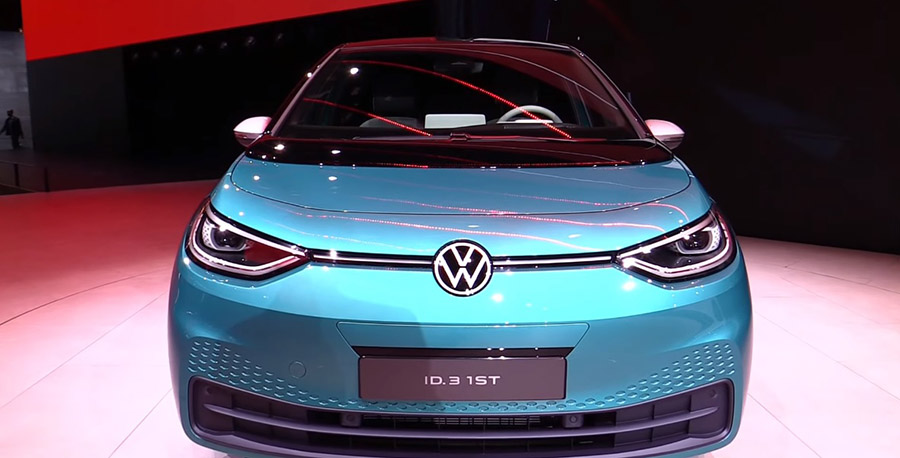
And now, there’s the Volkswagen ID.3, a car being touted as the third era of Volkswagen, hence the name. It’s also a car they hope will take them to the forefront of the electric vehicle race, and with any luck sweep all that Dieselgate nonsense under the carpet once and for all.
VW isn’t aiming low, it wants to sell these in the hundreds of thousands, all part of the VW group’s plan to sell three million EVs a year by 2025, with 50 fully electric cars across all its brands. The ID.3 is the first on a new MEB platform, and the first of an ID family that will include a saloon, multiple SUVs, and a resurrection of the VW campervan. Even a dune buggy is on the cards.

Just taking a first proper look at it and you can see straight away that the design priority here was to make the car as slippery smooth as possible. That’s the holy grail for electric cars of-course, because with proper aerodynamics, you can make the most of whatever juice you have in your battery.

At the front end, a bit like the Jaguar I-PACE, because you don’t have an engine to deal with. You’ve got a much shorter stubbier nose. They dragged the A-pillar forwards and made the windscreen more aerodynamic. The wheels are 18 inch as standard and 20 inch as an option.
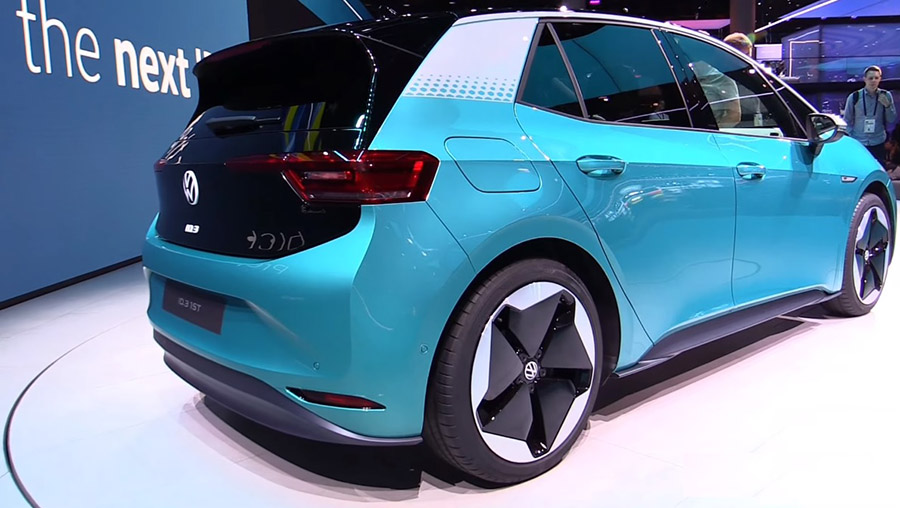
The priority of VW was to make it cost effective. You’re not going to sell millions of these, if nobody can afford them. Which is why, it’s made from trusty old steel, not fancy carbon fiber.
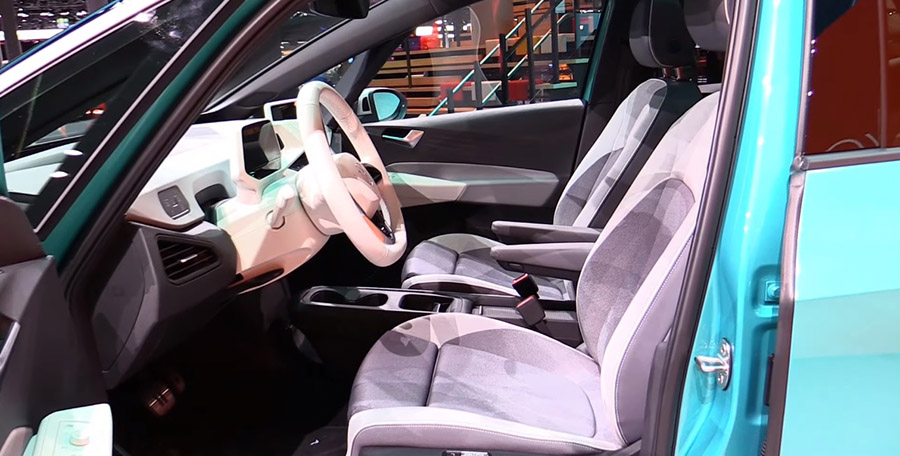
It will be available with three battery sizes, 45 kWh, 58 kWh and 77 kWh, which equates to 205, 260 and 341 miles of range respectively, according to the WLTP test. You’ll be able to choose between two power levels, 148 hp and 201 hp. It’s a rear-wheel drive for now, but all-wheel drive will follow.

Prices will start from under €30,000, which should convert to under £22,000 when you throw in the UK’s £3,500 government grant.
Find a 100 kilowatt charger and you can add 161 miles of range in 30 minutes.
In terms of size, its footprint on the road isn’t really that much different to a Golf. It’s a few millimeters longer, few millimeters wider, where it differs though is in height, it’s 60 millimeters taller than a Golf. It wheelbase between the wheels is 145 millimeters longer, which means more space inside.
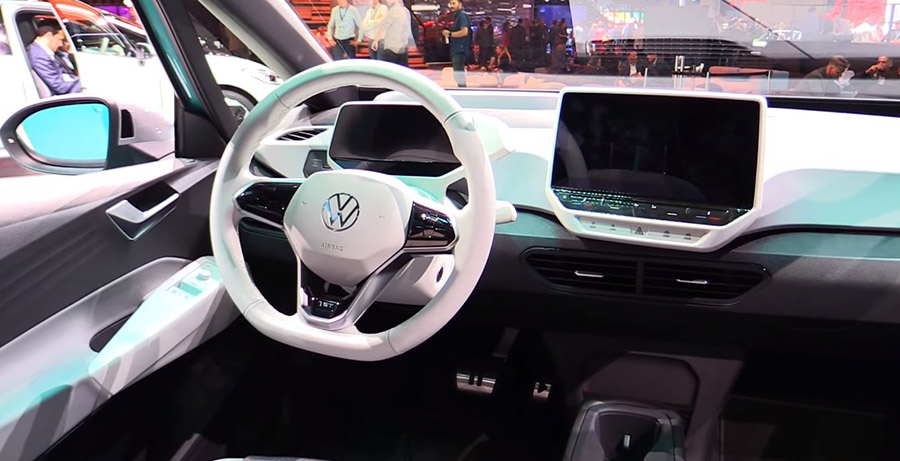
There’s two screen on the dashboard. The first of which is the instrument cluster behind the steering wheel, which is attached to the steering column, meaning it moves when you adjust the steering wheel.
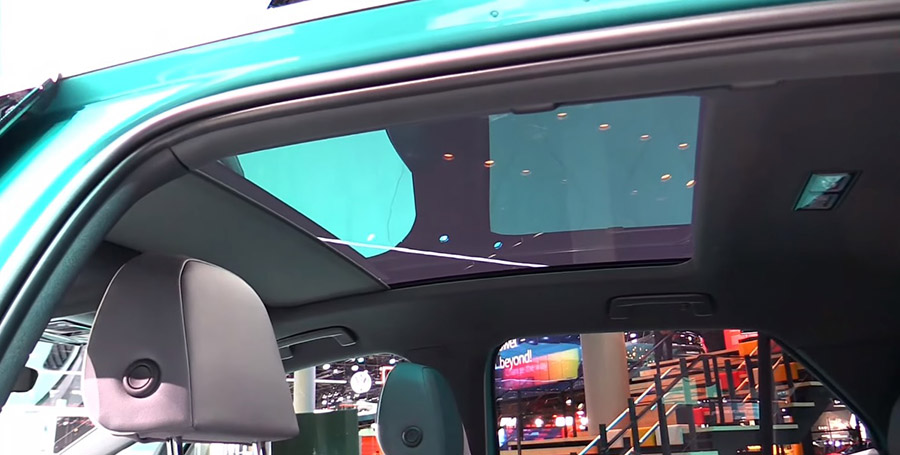
There is also an odd bit sticking out the side of screen, which is your rotary gear selector with a park button. There is also a gear to enter extra re-gen one pedal mode.

The second screen is angled towards the driver. Its not like a Tesla, in the way that Tesla do away with all buttons altogether, but most of the switches in ID.3 are not physical. They’re all touch sensitive with haptic feedback. The only physical switches are for the electric windows.










